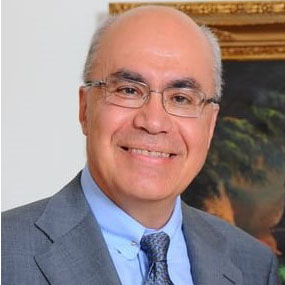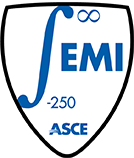UPCOMING LECTURE
Tuesday, October 29, 2024 - 4:30 pm EDT
Design and Safety Assessment of Structures and Infrastructure Systems Subjected to Extreme Events
in a Changing Climate
Speaker: Michel Ghosn, Professor of Civil Engineering The City College of the City University of New York / CUNY, New York, NY

Design and Safety Assessment of Structures and Infrastructure Systems Subjected to Extreme Events in a Changing Climate
Abstract: Civil infrastructure systems are exposed to various types of human-made, environmental, and climatic hazards within their service lives. Reliability-based approaches and probabilistic risk-informed methods have long been used for assessing the safety of such systems and developing design standards and specifications to account for the random nature of these hazards, their intensities, rates of occurrence, and possible compounding effects. Specifically, current design standards provide reliability-calibrated design load maps and tables as well as load combination factors for use in engineering practice during a structure’s safety assessment process. These maps and associated procedures are based on historical data assuming that the underlying climatic processes are unchanging over time such that observed variations in the historical data are only random oscillations around underlying stationary statistical properties. However, ageing processes, growth in economic activities, and climate change are causing increases in the frequencies and intensities of human-made and environmental hazards, raising the risk to infrastructure systems and their users. This presentation will review the fundamental principles behind structural code developments and their underlying assumptions. It also examines analytical methods to assess the safety of structural systems accounting for the nonstationary nature of climatic hazards. The presentation will present approaches for adjusting current structural design specifications in view of anticipated climate change scenarios. Numerical examples will illustrate the application of these approaches for the safety assessment and the design of structural systems.
PAST LECTURES
Wednesday, March 6, 2024, 4:30 PMSwaying Skyscrapers: Unveiling the Dance Between Wind and Tall Buildings Through the Ages
Speaker: Ahsan Kareem, Robert M. Moran Professor, NatHaz Modeling Laboratory, University of Notre Dame, Notre Dame, IN

1 PDH will be awarded to eligible attendees for each lecture (Minimum Zoom time of 55 minutes is required)
Abstract: The seminar will focus on addressing the three elements of tall buildings' life cycle from design, and construction to performance evaluation. It summarizes the history of wind effects on tall buildings from the design of the World Trade Center Towers to the present-day skyscrapers and beyond. From earlier studies at the National Physical Laboratory in the UK involving the World Trade Center Towers, it was realized that it was essential to model the inflow that was reflective of the atmospheric boundary layer rather than a uniform flow in an aeronautical tunnel. At that juncture, the dynamic response was evaluated using base-pivoted aeroelastic models while a search for a more expeditious means of assessing wind loads was in progress, which led to the development of various force balances. In this context, a general overview of the basic techniques for the quantification of wind loads and their dynamic effects using analytical, experimental, computational fluid dynamics (CFD) and model-based and data-driven simulation schemes, database-enabled platforms, code and standards-based procedures and lessons from full-scale monitoring will be presented in a historical perspective. The issue of human sensitivity to motion will be described from its early day experiments by Fazlur Rahman Khan to current motion simulators. This will be followed by a synopsis of the emerging frontiers in CFD from isolated buildings to cityscapes, mesoscale to micro-scale, shape and topological optimization, the vulnerability of glass cladding in extreme winds, the role of organic damping and damping devices for the mitigation of building motion.
Friday, February 2, 2024, 4:30 pm, ET
Challenges in Future Development of Structural Reliability Methods
Speaker: Armen Der Kiureghian, Taisei Professor of Civil Engineering Emeritus, University of California, Berkeley, President Emeritus, American University of Armenia (affiliate of University of California)

Abstract: A variety of methods for assessment of structural reliability and for reliability-based optimal design have been developed in the past fifty years. Among methods in current use are first- and second-order reliability methods (FORM and SORM), various efficient simulation methods, and surrogate-modeling methods. After a short review of these methods, this lecture will focus on the existing challenges in applying these methods to complex real-world problems characterized by nonlinearity, stochastic dynamics, multi-phase interactions, and having high computational demand. The lecture will hopefully provide motivation to young researchers to pursue research and development in addressing some of these challenges.


